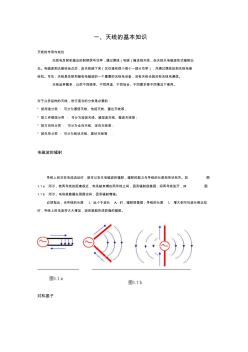无线通信基础(英文版)
无线通信基础(英文版)基本信息
| 书 名 | 无线通信基础(英文版) | 作 者 | [美]David Tse、Pramod Viswanath |
|---|---|---|---|
| 出版社 | 人民邮电出版社 | 出版时间 | 2010年11月 |
| 页 数 | 564 页 | 定 价 | 79 元 |
| 开 本 | 16 开 | 装 帧 | 平装 |
| ISBN | 9787115200709 | ||
Contents
1 Introduction 1
1.1 Book objective 1
1.2 Wireless systems 2
1.3 Book outline 5
2 The wireless channel 10
2.1 Physical modeling for wireless channels 10
2.1.1 Free space, fixed transmit and receive antennas 12
2.1.2 Free space, moving antenna 13
2.1.3 Reflecting wall, fixed antenna 14
2.1.4 Reflecting wall, moving antenna 16
2.1.5 Reflection from a ground plane 17
2.1.6 Power decay with distance and shadowing 18
2.1.7 Moving antenna, multiple reflectors 19
2.2 Input/output model of the wireless channel 20
2.2.1 The wireless channel as a linear time-varying system 20
2.2.2 Baseband equivalent model 22
2.2.3 A discrete-time baseband model 25
Discussion 2.1 Degrees of freedom 28
2.2.4 Additive white noise 29
2.3 Time and frequency coherence 30
2.3.1 Doppler spread and coherence time 30
2.3.2 Delay spread and coherence bandwidth 31
2.4 Statistical channel models 34
2.4.1 Modeling philosophy 34
2.4.2 Rayleigh and Rician fading 36
2.4.3 Tap gain auto-correlation function 37
Example 2.1 Clarke’s model 38
Chapter 2 The main plot 40
2.5 Bibliographical notes 42
2.6 Exercises 42
3 Point-to-point communication: detection, diversity, and channel ncertainty 49
3.1 Detection in a Rayleigh fading channel 50
3.1.1 Non-coherent detection 50
3.1.2 Coherent detection 52
3.1.3 From BPSK to QPSK: exploiting the degrees of freedom 56
3.1.4 Diversity 59
3.2 Time diversity 60
3.2.1 Repetition coding 60
3.2.2 Beyond repetition coding 64
Summary 3.1 Time diversity code design criterion 68
Example 3.1 Time diversity in GSM 69
3.3 Antenna diversity 71
3.3.1 Receive diversity 71
3.3.2 Transmit diversity: space-time codes 73
3.3.3 MIMO: a 2×2 example 77
Summary 3.2 2×2 MIMO schemes 82
3.4 Frequency diversity 83
3.4.1 Basic concept 83
3.4.2 Single-carrier with ISI equalization 84
3.4.3 Direct-sequence spread-spectrum 91
3.4.4 Orthogonal frequency division multiplexing 95
Summary 3.3 Communication over frequency-selective channels 101
3.5 Impact of channel uncertainty 102
3.5.1 Non-coherent detection for DS spread-spectrum 103
3.5.2 Channel estimation 105
3.5.3 Other diversity scenarios 107
Chapter 3 The main plot 109
3.6 Bibliographical notes 110
4 Cellular systems: multiple access and interference management 120
4.1 Introduction 120
4.2 Narrowband cellular systems 123
4.2.1 Narrowband allocations: GSM system 124
4.2.2 Impact on network and system design 126
4.2.3 Impact on frequency reuse 127
Summary 4.1 Narrowband systems 128
4.3 Wideband systems: CDMA 128
4.3.1 CDMA uplink 131
4.3.2 CDMA downlink 145
4.3.3 System issues 147
Summary 4.2 CDMA 147
4.4 Wideband systems: OFDM 148
4.4.1 Allocation design principles 148
4.4.2 Hopping pattern 150
4.4.3 Signal characteristics and receiver design 152
4.4.4 Sectorization 153
Example 4.1 Flash-OFDM 153
Chapter 4 The main plot 154
4.5 Bibliographical notes 155
4.6 Exercises 155
5 Capacity of wireless channels 166
5.1 AWGN channel capacity 167
5.1.1 Repetition coding 167
5.1.2 Packing spheres 168
Discussion 5.1 Capacity-achieving AWGN channel codes 170
Summary 5.1 Reliable rate of communication and capacity 171
5.2 Resources of the AWGN channel 172
5.2.1 Continuous-time AWGN channel 172
5.2.2 Power and bandwidth 173
Example 5.2 Bandwidth reuse in cellular systems 175
5.3 Linear time-invariant Gaussian channels 179
5.3.1 Single input multiple output (SIMO) channel 179
5.3.2 Multiple input single output (MISO) channel 179
5.3.3 Frequency-selective channel 181
5.4 Capacity of fading channels 186
5.4.1 Slow fading channel 187
5.4.2 Receive diversity 189
5.4.3 Transmit diversity 191
Summary 5.2 Transmit and receive diversity 195
5.4.4 Time and frequency diversity 195
Summary 5.3 Outage for parallel channels 199
5.4.5 Fast fading channel 199
5.4.6 Transmitter side information 203
Example 5.3 Rate adaptation in IS-856 209
5.4.7 Frequency-selective fading channels 213
5.4.8 Summary: a shift in point of view 213
Chapter 5 The main plot 214
5.5 Bibliographical notes 217
5.6 Exercises 217
6 Multiuser capacity and opportunistic communication 228
6.1 Uplink AWGN channel 229
6.1.1 Capacity via successive interference cancellation 229
6.1.2 Comparison with conventional CDMA 232
6.1.3 Comparison with orthogonal multiple access 232
6.1.4 General K -user uplink capacity 234
6.2 Downlink AWGN channel 235
6.2.1 Symmetric case: two capacity-achieving schemes 236
6.2.2 General case: superposition coding achieves capacity 238
Summary 6.1 Uplink and downlink AWGN capacity 240
Discussion 6.1 SIC: implementation issues 241
6.3 Uplink fading channel 243
6.3.1 Slow fading channel 243
6.3.2 Fast fading channel 245
6.3.3 Full channel side information 247
Summary 6.2 Uplink fading channel 250
6.4 Downlink fading channel 250
6.4.1 Channel side information at receiver only 250
6.4.2 Full channel side information 251
6.5 Frequency-selective fading channels 252
6.6 Multiuser diversity 253
6.6.1 Multiuser diversity gain 253
6.6.2 Multiuser versus classical diversity 256
6.7 Multiuser diversity: system aspects 256
6.7.1 Fair scheduling and multiuser diversity 258
6.7.2 Channel prediction and feedback 262
6.7.3 Opportunistic beamforming using dumb antennas 263
6.7.4 Multiuser diversity in multicell systems 270
6.7.5 A system view 272
Chapter 6 The main plot 275
6.8 Bibliographical notes 277
6.9 Exercises 278
7 MIMO I: spatial multiplexing and channel modeling 290
7.1 Multiplexing capability of deterministic MIMO channels 291
7.1.1 Capacity via singular value decomposition 291
7.1.2 Rank and condition number 294
7.2 Physical modeling of MIMO channels 295
7.2.1 Line-of-sight SIMO channel 296
7.2.2 Line-of-sight MISO channel 298
7.2.3 Antenna arrays with only a line-of-sight path 299
7.2.4 Geographically separated antennas 300
7.2.5 Line-of-sight plus one reflected path 306
Summary 7.1 Multiplexing capability of MIMO channels 309
7.3 Modeling of MIMO fading channels 309
7.3.1 Basic approach 309
7.3.2 MIMO multipath channel 311
7.3.3 Angular domain representation of signals 311
7.3.4 Angular domain representation of MIMO channels 315
7.3.5 Statistical modeling in the angular domain 317
7.3.6 Degrees of freedom and diversity 318
Example 7.1 Degrees of freedom in clustered response models 319
7.3.7 Dependency on antenna spacing 323
7.3.8 I.i.d.Rayleigh fading model 327
Chapter 7 The main plot 328
7.4 Bibliographical notes 329
7.5 Exercises 330
8 MIMO II: capacity and multiplexing architectures 332
8.1 The V-BLAST architecture 333
8.2 Fast fading MIMO channel 335
8.2.1 Capacity with CSI at receiver 336
8.2.2 Performance gains 338
8.2.3 Full CSI 346
Summary 8.1 Performance gains in a MIMO channel 348
8.3 Receiver architectures 348
8.3.1 Linear decorrelator 349
8.3.2 Successive cancellation 355
8.3.3 Linear MMSE receiver 356
8.3.4 Information theoretic optimality 362
Discussion 8.1 Connections with CDMA multiuser detection and ISI equalization 364
8.4 Slow fading MIMO channel 366
8.5 D-BLAST: an outage-optimal architecture 368
8.5.1 Suboptimality of V-BLAST 368
8.5.2 Coding across transmit antennas: D-BLAST 371
8.5.3 Discussion 372
Chapter 8 The main plot 373
8.6 Bibliographical notes 374
8.7 Exercises 374
9 MIMO III: diversity–multiplexing tradeoff and universal space-time codes 383
9.1 Diversity–multiplexing tradeoff 384
9.1.1 Formulation 384
9.1.2 Scalar Rayleigh channel 386
9.1.3 Parallel Rayleigh channel 390
9.1.4 MISO Rayleigh channel 391
9.1.5 2×2 MIMO Rayleigh channel 392
9.1.6 nt×nr MIMO i.i.d.Rayleigh channel 395
9.2 Universal code design for optimal diversity-multiplexing tradeoff 398
9.2.1 QAM is approximately universal for scalar channels 398
Summary 9.1 Approximate universality 400
9.2.2 Universal code design for parallel channels 400
Summary 9.2 Universal codes for the parallel channel 406
9.2.3 Universal code design for MISO channels 407
Summary 9.3 Universal codes for the MISO channel 410
9.2.4 Universal code design for MIMO channels 411
Discussion 9.1 Universal codes in the downlink 415
Chapter 9 The main plot 415
9.3 Bibliographical notes 416
9.4 Exercises 417
10 MIMO IV: multiuser communication 425
10.1 Uplink with multiple receive antennas 426
10.1.1 Space-division multiple access 426
10.1.2 SDMA capacity region 428
10.1.3 System implications 431
Summary 10.1 SDMA and orthogonal multiple access 432
10.1.4 Slow fading 433
10.1.5 Fast fading 436
10.1.6 Multiuser diversity revisited 439
Summary 10.2 Opportunistic communication and multiple receive antennas 442
10.2 MIMO uplink 442
10.2.1 SDMA with multiple transmit antennas 442
10.2.2 System implications 444
10.2.3 Fast fading 446
10.3 Downlink with multiple transmit antennas 448
10.3.1 Degrees of freedom in the downlink 448
10.3.2 Uplink–downlink duality and transmit beamforming 449
10.3.3 Precoding for interference known at transmitter 454
10.3.4 Precoding for the downlink 465
10.3.5 Fast fading 468
10.4 MIMO downlink 471
10.5 Multiple antennas in cellular networks: a system view 473
Summary 10.3 System implications of multiple antennas on multiple access 473
10.5.1 Inter-cell interference management 474
10.5.2 Uplink with multiple receive antennas 476
10.5.3 MIMO uplink 478
10.5.4 Downlink with multiple receive antennas 479
10.5.5 Downlink with multiple transmit antennas 479
Example 10.1 SDMA in ArrayComm systems 479
Chapter 10 The main plot 481
10.6 Bibliographical notes 482
10.7 Exercises 483
Appendix A Detection and estimation in additive Gaussian noise 496
Appendix B Information theory from first principles 516
References 546
Index 554
无线通信基础(英文版)造价信息
本书介绍无线通信的基本原理,着重强调概念及其在系统中的实现之间的相互影响,涉及的主要问题有MIMO通信、空时编码、机会通信、OFDM和CDMA等,这些概念均利用无线系统的大量实例予以说明。书中还配有大量的习题和图表,可以帮助读者进一步理解材料内容。
本书适合作为通信工程和电子信息类相关专业高年级本科生和研究生的教材,也可供工程技术人员参考。
无线通信基础(英文版)常见问题
-
我有一个绝对适合你的资料,已经发到你的邮箱了。你看一下,这个是我自己写的。有看不明白的地方就直接找我
-
室内设计软件:AutoCAD2004(常用)、3Dmax效果图建模、lightscape3.2渲染软件,photshop7。0图片处理软件。 学室内设计,首要先看懂设计图纸,AutoCAD软件一般画施...
-
英文版还是很长的,你可以慢慢学习,不要考虑一蹴而就。 Jingle bells, jingle bells, jingle all the way! O what fun it is to ride ...
无线通信基础(英文版)文献

 无线通信基础知识
无线通信基础知识
一、天线的基本知识 天线的作用与地位 无线电发射机输出的射频信号功率,通过馈线(电缆)输送到天线,由天线以电磁波形式辐射出 去。电磁波到达接收地点后,由天线接下来(仅仅接收很小很小一部分功率),并通过馈线送到无线电接 收机。可见,天线是发射和接收电磁波的一个重要的无线电设备,没有天线也就没有无线电通信。 天线品种繁多,以供不同频率、不同用途、不同场合、不同要求等不同情况下使用。 对于众多品种的天线,进行适当的分类是必要的: * 按用途分类 : 可分为通信天线、电视天线、雷达天线等; * 按工作频段分类 : 可分为短波天线、超短波天线、微波天线等; * 按方向性分类 : 可分为全向天线、定向天线等; * 按外形分类 : 可分为线状天线、面状天线等 . 电磁波的辐射 导线上有交变电流流动时,就可以发生电磁波的辐射,辐射的能力与导线的长度和形状有关。如 图 1.1 a 所示,若两导线的距离很

 英文版外贸合同(中英文对照版)
英文版外贸合同(中英文对照版)
外贸合同 Contract( sales confirmation) 合同编号(Contract No.): _______________ 签订日期(Date) :___________ 签订地点(Signed at) :___________ 买方:__________________________ The Buyer:________________________ 地址:__________________________ Address: _________________________ 电话(Tel):___________传真(Fax):__________ 电子邮箱(E-mail):______________________ 卖方:________________
作者: (美)David Tse
David Tse博士是无线通信领域新一代权威,现任加州大学伯克利分校电气工程与计算机科学系教授,毕业于麻省理工学院。..
无线通信基础
无线通信基础(英文影印版)
作者: (美)Pramod Viswanath
ramod Viswanath博士现任伊利诺伊大学厄巴纳一尚佩恩分校电气与计算机工程系副教授,毕业子加州大学伯克利分校。..
无线通信基础
无线通信基础(英文影印版)
为便于阅读,《无线通信基础及应用》在编写中力求深入浅出、理论联系实际。并力求充分反映无线通信技术的新进展。书中列举了一些例题,在每章后面都附有习题。《无线通信基础及应用》可作为高等学校无线电技术、通信与电子系统等专业高年级本科生的教材,也可作为通信工程技术人员和科研人员继续学习的参考用书。
《无线通信基础及应用》配有电子教案,需要者可登录出版社网站,免费下载。
第1章 绪论
1.1 无线通信系统的构成
1.2 无线通信系统的主要规格指标
1.3 无线通信技术的发展
1.4 无线通信的发展趋势
1.5 现代无线通信系统实例
1.5.1 无线寻呼系统
1.5.2 蜂窝电话
1.5.3 集群通信系统
1.5.4 无绳电话
1.5.5 无线局域网
1.5.6 个人域网
1.5.7 固定无线接入
1.6 无线通信面临的技术挑战
习题
第2章 无线通信基础
2.1 无线信道传播概述
2.1.1 电磁波的基本知识
2.1.2 无线电波的传播方式
2.1.3 电磁波的极化
2.2 大尺度路径损耗
2.2.1 概述
2.2.2 自由空间传播模型
2.2.3 辐射电场与功率的关系
2.2.4 电磁波基本传播机制
2.2.5 无线信道传输损耗模型
2.3 小尺度衰落和多径效应
2.3.1 小尺度多径传播
2.3.2 多径信道的冲激响应模型
2.3.3 无线多径信道特性测量
2.3.4 无线多径信道特性参数
2.3.5 小尺度衰落信道类型
2.3.6 阴影衰落和衰落储备
习题
第3章 无线通信基本技术
3.1 信源编码
3.1.1 语音编码
3.1.2 数据压缩编码
3.2 信道编码
3.2.1 信道编码的基本概念
3.2.2 线性分组码
3.2.3 循环码
3.2.4 卷积码
3.2.5 Turb0编码
3.3 调制技术
3.3.1 调制技术概述
3.3.2 最小频移键控(MSK)
3.3.3 x/4QPSK
3.3.4 正交振幅调制(QAM)技术
3.3.5 正交频分复用调制
3.4 多址技术
3.4.1 频分多址(FDMA)
3.4.2 时分多址(TDMA)
3.4.3 空分多址(SDMA)
3.4.4 扩频多址(SSMA)/码分多址(CDMA)
3.4.5 分组无线电(PR)/随机多址(RA)
3.5 抗衰落技术
3.5.1 分集接收
3.5.2 均衡技术
3.5.3 RAKE接收技术
习题
第4章 移动通信网络技术
4.1 概述
4.1.1 移动通信的概念及特点
4.1.2 移动通信系统的基本组成
4.1.3 移动通信的分类
4.2 频率复用技术和系统容量
4.2.1 频率复用技术
4.2.2 干扰和系统容量
4.3 移动性管理
4.3.1 位置管理
4.3.2 切换控制
4.4 蜂窝通信网络规划
4.4.1 蜂窝网络规划的主要内容
4.4.2 蜂窝无线网络规划流程
4.4.3 蜂窝系统业务量描述与业务量估计
4.4.4 蜂窝无线网络设计
习题
第5章 无线通信系统
5.1 GSM移动通信系统
5.1.1 概述
5.1.2 GSM无线子系统的结构原理
5.1.3 GSM系统的主要规格参数
5.1.4 GSM逻辑信道
5.1.5 GSM唢结构
5.1.6 语音编码和信道编码
5.1.7 GSM安全性管理
5.1.8 GPRS通用分组无线业务
5.2 CDMA蜂窝移动通信系统
5.2.1 IS-95CDMA系统
5.2.2 IS-95系统的无线传输
5.2.3 CDMA系统的功率控制
5.2.4 CDMA系统的软切换
5.3 第三代移动通信系统
5.3.1 系统概述
5.3.2 WCDMA系统
5.3.3 TD-SCDMA系统
5.3.4 CDMA2000系统
5.4 卫星通信
5.5 无线局域网
5.5.1 无线局域网的组成及组网
5.5.2 IEEE802.1 1无线局域网的协议体系
5.6 其他无线通信系统
5.6.1 蓝牙技术
5.6.2 短波通信
5.6.3 无线射频识别技术(RFID)
习题
第6章 无线通信新技术
6.1 软件无线电技术
6.1.1 软件无线电的概念
6.1.2 软件无线电的特点
6.1.3 软件无线电的关键技术
6.1.4 软件无线电的应用
6.2 超宽带无线技术
6.2.1 超宽带的概念
6.2.2 超宽带技术的主要特点
6.2.3 超宽带的关键技术
6.2.4 超宽带与其他近距离无线通信技术的比较
6.2.5 超宽带的应用
6.2.6 超宽带的发展趋势
6.3 智能天线技术
6.3.1 智能天线的组成
6.3.2 智能天线的主要功能
6.3.3 智能天线的分类
6.3.4 智能天线的算法
6.3.5 智能天线的应用
6.3.6 智能天线存在的问题及发展
6.4 WiMAX技术
6.4.1 WiMAX技术概述
6.4.2 WiMAX中的先进技术
6.4.3 WiMAX与其他接入技术比较
6.4.4 WiMAX的现状、应用及发展
6.5 认知无线电技术
6.5.1 认知无线电技术的发展背景
6.5.2 认知无线电的历史和特征
6.5.3 认知无线电的应用场景
6.5.4 认知无线电的关键技术
习题
附录A带通信号的基带等效表示
附录B式(2-3-28)的证明
附录C无线通信中常用英文缩略词
参考文献
……
- 相关百科
- 相关知识
- 相关专栏
- 无线通信工程师
- 无线音箱
- 无结构土壤
- 无绝缘轨道电路
- 无绳电话机原理使用与维修
- 无绳电话机原理调试与维修
- 无绳电话机维修入门
- 无绳电话机维修图说
- 无绳电话机维修技术
- 无色荧光防伪纤维
- 无螺杆式注塑成型机
- 无角菱
- 无轨电车晶闸管斩波器技术条件
- 无轨电车牵引供电网工程技术规范cjj/t72-2015
- 无辐射火锅电磁炉
- 无辐射电磁炉
- 有软弱下卧层时确定天然地基上基础底面积的简便方法
- 易地扶贫搬迁安置点公共基础设施施工组织方案与对策
- 以位移为基础的钢筋混凝土桥梁墩柱抗震设计方法
- 在浅覆盖土层上的深水基础导管架工作平台设计与施工
- 以项目为载体的机械设计基础课程探索与实践教学设计
- 新型基础滑移隔震框架结构体系的理论分析
- 以合成烃为基础油研制的机车螺杆式空气压缩机润滑油
- 制药工程专业化工设备机械基础课程教学改革探索
- 以EPM和EPDM共混胶为基础的电线电缆绝缘胶料
- 园林绿化专业基础与实务(中级)考试
- 关于印发进一步加强我市市政基础设施工程质量管理
- 关于黄土地区桥梁挖井基础设计方法一文讨论
- 关于地基基础设计若干问题PPT之复合地基设计原则
- 工业与民用建筑灌注桩基础设计与施工规程JGJ480
- 关于广东省市政基础设施工程统一用表监理表格填表说明
- 广东清远地区输电线路大节理裂隙岩体锚杆基础试验